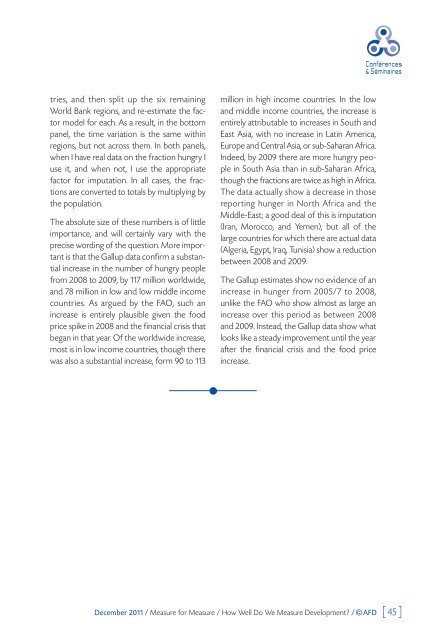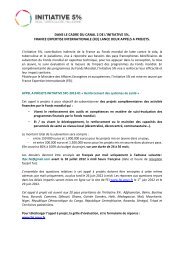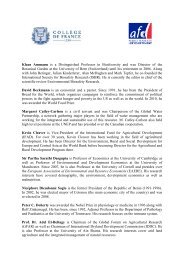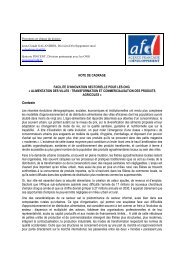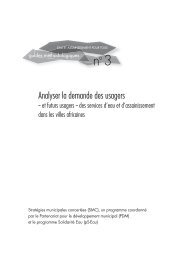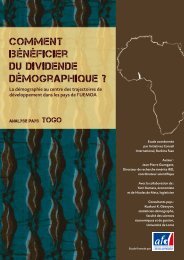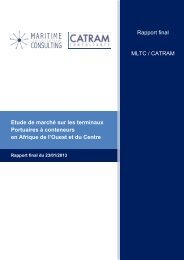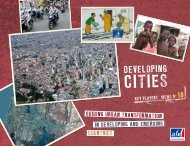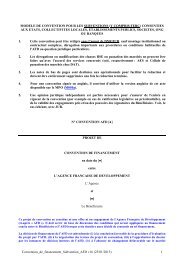Paris School of Economics - L'Agence Française de Développement
Paris School of Economics - L'Agence Française de Développement
Paris School of Economics - L'Agence Française de Développement
You also want an ePaper? Increase the reach of your titles
YUMPU automatically turns print PDFs into web optimized ePapers that Google loves.
tries, and then split up the six remaining<br />
World Bank regions, and re-estimate the factor<br />
mo<strong>de</strong>l for each. As a result, in the bottom<br />
panel, the time variation is the same within<br />
regions, but not across them. In both panels,<br />
when I have real data on the fraction hungry I<br />
use it, and when not, I use the appropriate<br />
factor for imputation. In all cases, the fractions<br />
are converted to totals by multiplying by<br />
the population.<br />
The absolute size <strong>of</strong> these numbers is <strong>of</strong> little<br />
importance, and will certainly vary with the<br />
precise wording <strong>of</strong> the question. More important<br />
is that the Gallup data confirm a substantial<br />
increase in the number <strong>of</strong> hungry people<br />
from 2008 to 2009, by 117 million worldwi<strong>de</strong>,<br />
and 78 million in low and low middle income<br />
countries. As argued by the FAO, such an<br />
increase is entirely plausible given the food<br />
price spike in 2008 and the financial crisis that<br />
began in that year. Of the worldwi<strong>de</strong> increase,<br />
most is in low income countries, though there<br />
was also a substantial increase, form 90 to 113<br />
million in high income countries. In the low<br />
and middle income countries, the increase is<br />
entirely attributable to increases in South and<br />
East Asia, with no increase in Latin America,<br />
Europe and Central Asia, or sub-Saharan Africa.<br />
In<strong>de</strong>ed, by 2009 there are more hungry people<br />
in South Asia than in sub-Saharan Africa,<br />
though the fractions are twice as high in Africa.<br />
The data actually show a <strong>de</strong>crease in those<br />
reporting hunger in North Africa and the<br />
Middle-East; a good <strong>de</strong>al <strong>of</strong> this is imputation<br />
(Iran, Morocco, and Yemen), but all <strong>of</strong> the<br />
large countries for which there are actual data<br />
(Algeria, Egypt, Iraq, Tunisia) show a reduction<br />
between 2008 and 2009.<br />
The Gallup estimates show no evi<strong>de</strong>nce <strong>of</strong> an<br />
increase in hunger from 2005/7 to 2008,<br />
unlike the FAO who show almost as large an<br />
increase over this period as between 2008<br />
and 2009. Instead, the Gallup data show what<br />
looks like a steady improvement until the year<br />
after the financial crisis and the food price<br />
increase.<br />
December 2011 / Measure for Measure / How Well Do We Measure Development? / © AFD [ 45<br />
]


